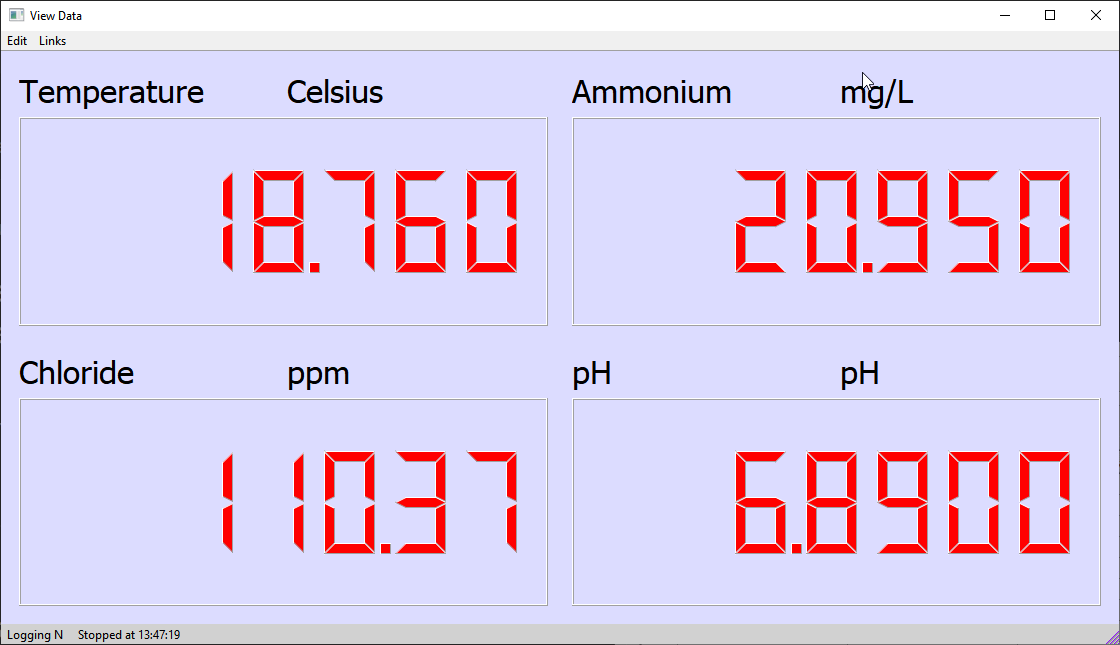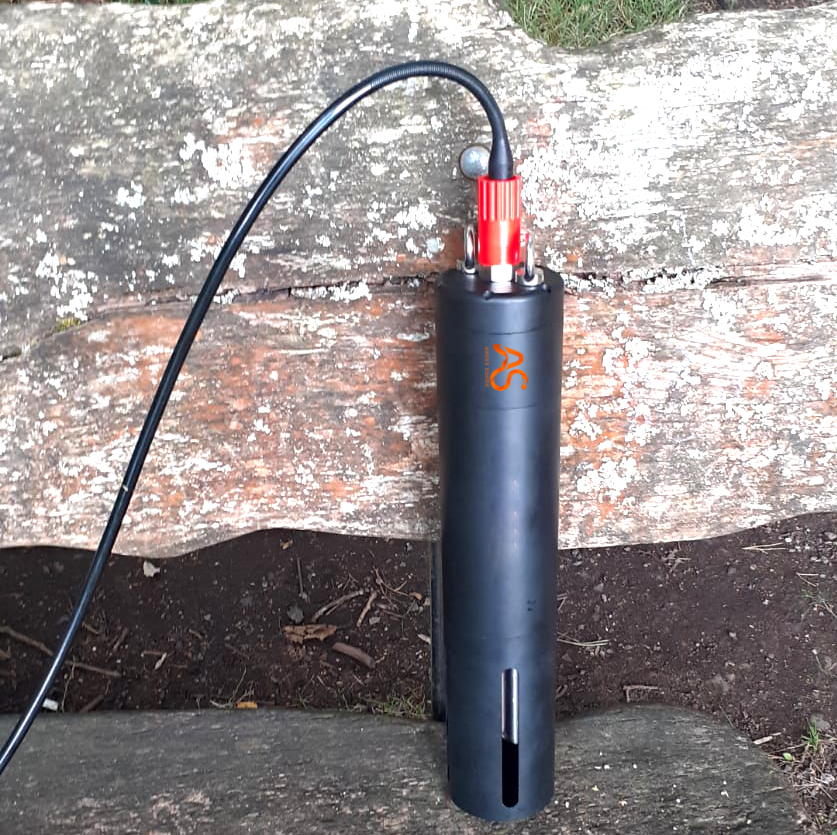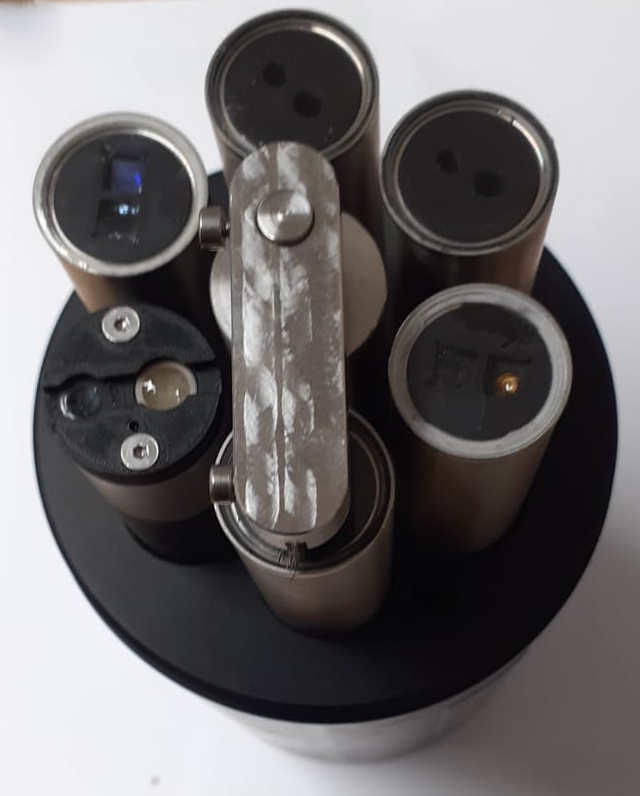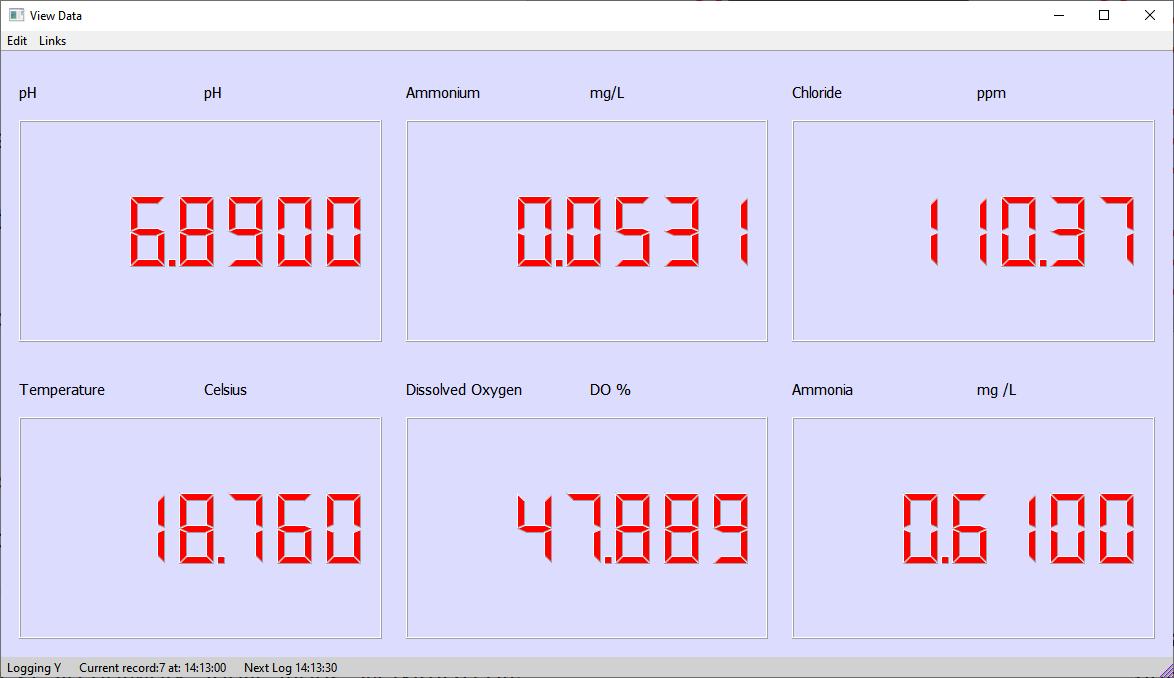ARGES Ammonium Sensor
The Intelligent Submersible Ammonium Sensor By Keynes Controls, is a submersible sensor that has been designed to simplify the acquisition of water quality measurement parameters into any platform that supports real-time reporting, data logging operations.
The ARGES Ammonium Sensor by Keynes Controls can be used as a stand-alone sensor, or as part of a Multi-parameter sensor array. All of the ARGES range of chemical sensors can be combined with the other Keynes Controls sensor interfaces using the same common User interface.
The ARGES Ammonium Sensor by Keynes Controls directly supports SDI12, RS485 and MODBUS digital networks.
WHY TEST FOR AMMONIA IN WATER SOURCES
The measurement of ammonia is critically important in applications such as wastewater, where treatment plants are required to provide a laboratory measurement of ammonia concentration.
Ammonia levels higher than around 0.9 mg/l is a good indicator of a polluted water source. Ammonia is commonly used in the manufacture of animal feed, and in the manufacture of plastics.
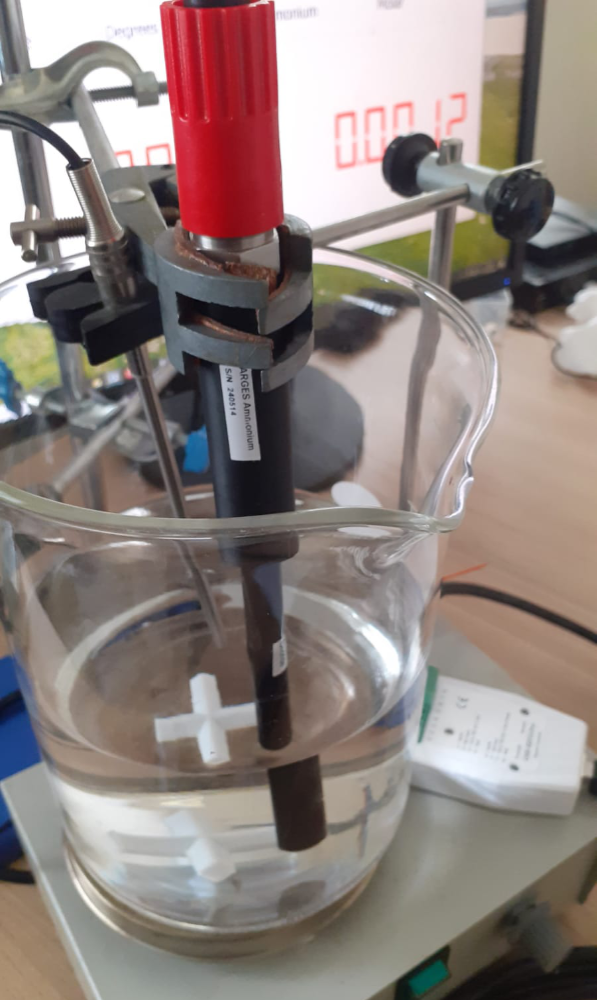

Measurement Integrity
All of the ARGEs sensor range has the serial numbers and the last calibration date stored internally. The user can access this information for reporting purposes. The sensors can be redeployed at any time with the calibration and serial number records are retained in the sensor.
ISOLATION
The sensor element of the Ammonium Sensor is isolated when not to required for any measurements. This prevents contamination of the sensor element and maintains the long active life of the device.
When no measurement is being made the sensor is in low power mode.
AMMONIA - AMMONIUM
Both Ammonia and Ammonium compounds contain Nitrogen and Hydrogen. Ammonium contains 4 Hydrogen and 1 Nitrogen and Ammonia 3 Hydrogen and 1 Nitrogen, as a result Ammonia smells pungently and Ammonium very little small.
Agricultural & Industrial Runoff
Highly-concentrated levels of ammonia in local water ways can also be detected where there are elevated levels of animal waste nearby, for example, where intensive animal farming occurs or local sewage treatment is not being carried out correctly.
Sources of Ammonia in water
- Municipal waste treatment outfalls
- Septic seepage
- Industrial point sources
- Agricultural and urban runoff (fertiliser)
- Manure application
- Concentrated animal feeding operations
- Aquaculture
- Landfill leachate
Additional Material:
Toxic levels of ammonia will vary and is dependent upon the water source, pH and temperature. Toxicity to aquatic life has been reported at levels between 0.50 and 20 mg/L.
Indirectly, an ammonia build-up can enhance the growth of toxic algal blooms that 'choke' a body of water, leading to the reduction of dissolved oxygen therein.
Excess levels of ammonia is a common cause of fish deaths.
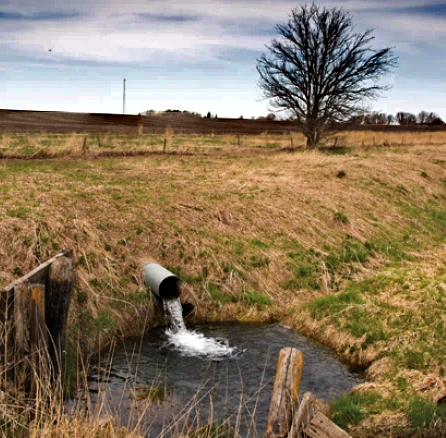
Evidence of Ammonia
- Foul Odour
- Presence of Organic waste
- Presence of organic suspended solids.
Product Features
| TYPE | RANGE (Typical levels) |
| Solid State ISE sensor. | |
| Measurement Range: | 0.9 - 9000 ppm - auto ranging |
| Resolution: | 0.01 - parts per million |
| Accuracy: | +/- 10 % range reading - accurate solid state sensor |
| Operation |
Stand-alone and SONDE Multi-parameter |
| Sensor life: | Approximately 6 months, depending on usage. |
| Interference IONS | Volatile Amines |
| pH Range | 0 - 18 |
| Protection | No membrane replacements |
| In-built Digital Communications | SDI12 / RS485 / MODBUS |
| Settling Time | 10-60 Seconds after submergence |
| Operating Temperature | -5 to 60 Deg C |
| SI Units |
ppm Degree Celsius |
| Sensor Isolation: | Reference cells isolated between measurements |
| Interference IONS | K+ Na+ |
Calibration Summary
The ARGES Ammonium Sensor by Keynes Controls is typically calibrated at 2 points. The overall accuracy of the sensor will depend upon how well the ARGES Ammonium sensor has calibrated. The sensor by default uses a 2 point calibration procedure.
Distilled water is used as the zero point, and a high point is set using one of the standard calibration solutions. The ARGES Ammonium / Ammonia sensor supports additional calibration points.
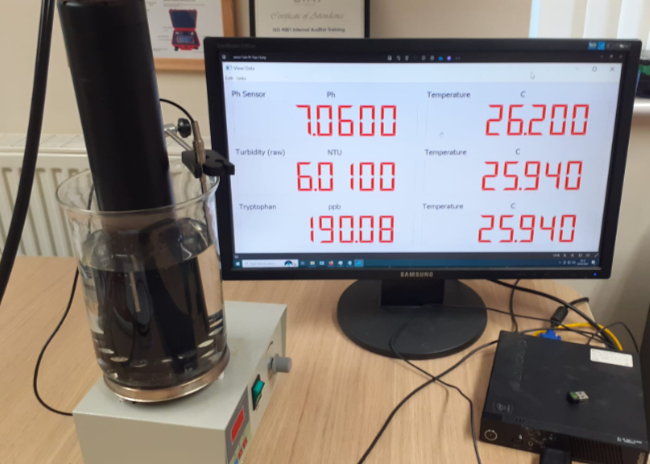
For best results the calibration should be done at the temperature that the sensor will be deployed. Calibration is undertaken in collaboration with a pH and temperature sensor.
When measuring concentrations of metals and minerals in water:
1 milligram per liter (mg/L) = 1 part per million (ppm)
1 microgram per liter (ug/L) = 1 part per billion (ppb) and 1 ppm = 1,000 ppb
Storage and Handling
When not in use the ARGES Ammonium Sensor By Keynes Controls is solid state and can be stored dry for a long period without any effect.
For optimum results rehydrate the sensor in a 0.1 M solution for several hours before use.
Storage temperature range : 2 - 60 Degrees Celsius.
Further Information:
Guidelines for drinking-water quality, WHO 1996.
Natural level in ground water is usually below 0.2 mg/L.
Higher natural levels are found is strata rich in humic substances or iron or in forests.
Surface water may contain up to 12 mg/L in drinking water as a result of disinfection with chloramines
Product Specifications
| Network Type | ENVIRONMENTAL CHARACTERISTICS | |||
| SDI12 | 1.4 | Temperature Range: 0 to 60 Degree Celsius | ||
| RS485 | Ambient Range: 0 - 50 Degree Celsius | |||
| MODBUS | 16 and 32 Bit Registers | Water Temperature: -2 to 60 Degree Celsius | ||
| Maximum Depth: 20 m | ||||
| Process Electrodes: | Reference Electrode | Potentiometric Type Operation | ||
| Material: | PPMA / Stainless Steel | PHYSICAL DIMENSIONS | ||
| Interference ION: | K+ Na+ | Length x Diameter: 22 x 220 mm | ||
| Weight: 97 g | ||||
| Settling Time |
|
Maximum Depth : 50 m | ||
| Wiper Trigger | SDI12 Command | aM! | ||
| Built-in Network Types: | ||||
| Excitation | Galvanic | SDI12 / RS485 / MODBUS over 485 | ||
| Housing | 316 Stainless Steel and PVC | |||
| Sensor Connector | Gold Plated | Power Requirement | ||
| Voltage Range: 10-18 V DC | ||||
| Data Output | - µg/L Degree Celsius | Standby Current: 1 mA Typical | ||
| Reading: 10 mA Typical |
Please Note: The Ammonium Sensor is pre-calibrated at the factory.
Supported Commands
Most Used Commands - SDI12
| Description | Command | Instrument Response |
| Start measurement | aM! | a05\r\n where 05 = time delay before measurement sent |
| Send ID | al! | a14KEYNESCOISO000014\r\n Part description assigned by Keynes |
| Address Query | ?! | Where a = ID number - 0 - 9 (standard) / (a..z) Enhanced SDI-12 0 - 9 / a - z for RS485 |
| Change Address | aAb! | where a = Initial address and b = Final address |
| Start Measurement | aM! | Make a measurement - a = address of sensor Example 1M! starts a measurement for sensor with ID=1 |
| Set Output Variables | XCSTR0 | Sets the parameter order for measurements sent from the sensor - factory set BCDM |
| Read Serial Number | aXSN! | Instrument Response a+Serial-number |
| Calibration Date | aXCD! | Instrument Response a+date |
| First Calibration point electrical (K) - Conductivity | XCA0 | Typical value = 0 |
| First point uncompensated (A) | XCA1 | Typical Value = 0 |
| Second point electrical (K) - Conductivity reading in calibration mode from the sensor | XCA2 | 500 uS Typical - as read from the sensor |
| Second point uncompensated (A) | XCA3 | 12824 Conductivity from standard |
| Temperature Compensation % per Degree C | XCA20 | Typical 1.92 % per/Degree C compensated salinity correction for PSS-78 |
| Calibration temperature | XCA21 | Corrected to 25 Deg C |
| TDS k factor | XCA23 | Factory set 0.67 Typical range 0.5 - 0.8 |
| Practical Salinity Offset | XCA24 | Factory set = -3.7655 |
| Practical Salinity Scale Factor | XCA25 | Factory set = 0.7317 |
| AAA | ||
| BBB | ||
| SDI12 V1.14 (Default factory settings) | ||
| String ID = A | XVIDS0 | Conductivity level as directly measured by the sensor. |
| String ID = B | XVIDS1 | Temperature compensated Conductivity μS/cm at 25 Deg C |
| String ID = C | XVIDS2 | Total Dissolved Solids |
| String ID = D | XVIDS3 | Practical Salinity |
Commonly used with: pH, Turbidity, Dissolved Oxygen
The Ammonium Sensor by Keynes Controls monitors the levels of Ammonium in water. The ARGES Ammonium Sensor by Keynes Controls readings can be affected by changes in temperature and salinity. This sensor is frequently paired with: pH, Turbidity, Typtopha, Conductivity sensors and other temperature sensors crafted and produced by Keynes Controls.
Turbidity Sensor =The ARGES Turbidity sensor by Keynes Control is a single-channel instrument that can detect and report turbidity levels in the range of 0.5 - 3000 NTU. Read More...
Submersible pH Sensor = The Intelligent Submersible pH Sensor by Keynes Controls, is a high performance submersible sensor that has been designed to simplify the acquisition of water quality measurement parameters, Ammonia concentration and toxicity increases as pH increases, although less ammonia is required to produce toxic effects at lower pH.
Temperature Effects on Dissolved Ammonia in water.
The Toxicity of ammonia (as total ammonia) increases as temperature increases,
Dissolved Oxygen
Oxygen is consumed as ammonia is oxidised (nitrification), and low oxygen levels increase ammonia levels by inhibiting nitrification. The ARGES Dissolved Oxygen sensor is used to monitor the oxygen levels in river water.
Built-in Communication Options
The ARGES Ammonium Sensor by Keynes Controls supports SDI12, RS485 and MODBUS digital communications as standard enabling it to be directly connected to Data Logger for remote web based reporting, onto Wi-Fi and Local Area Networks using the RS485 option. The MODBUS and RS485 option are often used to connect sensors to a PLC Controller and Display Units,. The MODBUS protocol enables the sensors to be used directly by most SCADA applications software.

Multiparameter Housings / SONDE
The ARGES Ammonium Sensor by Keynes Controls can be used as a stand-alone device or as a part of a multiparameter solution. Keynes Controls currently manufacture 7 port and 3 port sensor housings. An optional submersible brush unit is available for cleaning the sensor underwater.
Multiparameter Measurements
Any combination of ARGES sensors selective can be fitted into the multiparameter housing
Optional USB Interfaces
Keynes Controls manufactures a range of accessories that can be used to connect the ARGES range of sensors to a Windows computer system and enable the sensors to be used in Laboratory applications, multi-parameter instruments and calibration operations.
The optional USB media converters can be used to connect a multi-parameter instrument to a PC.
The ARGES Ammonium Sensor by Keynes Controls is integrated into the Keynes Controls Q-LOG software.
Our Q-LOG software runs on the widely recognised Windows Operating system, you have the ability to calibrate, adjust instrument network address, and effortlessly display measurements on a series of panel meters and charts. Conveniently store results in text based files for quick analysis in spreadsheets.
MODBUS Operations
ALL of the ARGES range of chemical sensors support MODBUS network operations The sensors act as a slave unit only and can communicate to suitable controllers and SCADA systems that support the MODBUS Protocol. The sensors support 16 and 32 bit registers. .
The ARGES sensors can be connected to a PC based system using the optional USB-485-Pro media converter. This device can power the chemical sensor and supports the correct timing protocols for data transmission for MODBUS and standard RS485 network communications

